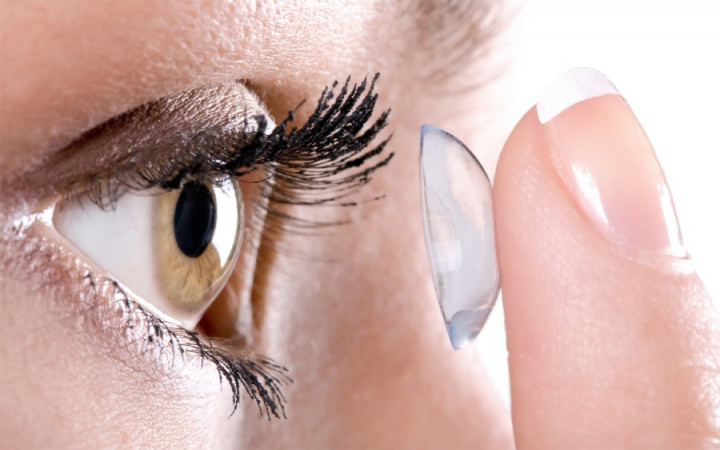Today’s Wonder of the Day was inspired by Caleb. Caleb Wonders, “how do contacts work” Thanks for WONDERing with us, Caleb!
Do you wear glasses or know someone who does? Vision problems are very common, so it's likely that if you don't wear glasses yourself, you probably have a close friend or family member who does.
Have you ever known someone who wears glasses, but suddenly you see them one day and they're not wearing glasses? What happened? Did their eyes heal themselves? Probably not! It's likely that they simply switched from wearing glasses to using contact lenses.
Contact lenses are super-thin, nearly-invisible discs made out of plastic. Unlike eyeglasses, contact lenses sit directly on the cornea of the eye. They stick to the layer of tear fluid that coats the surface of the eye. Pressure from the eyelid also helps to keep them in place.
Contact lenses move with the eye, so they provide an experience closer to natural sight than eyeglasses do. They work in much the same way as regular eyeglasses: their unique shape corrects refractive errors, such as nearsightedness (called myopia) and farsightedness (called hyperopia), by helping the eye focus light directly on the retina.
If you've ever seen contact lenses, you know that they're much smaller and thinner than regular eyeglasses. Because contact lenses sit directly on the eye, their optic zone (where their corrective power comes from) can be much smaller than that of regular eyeglasses. Since eyeglasses sit a half-inch or more away from the eye, their optic zone must be much bigger.
For example, the optic zone of a pair of eyeglasses is the whole lens surface, whereas the optic zone of a pair of contact lenses is only a part of the lens. Think of it this way: if you stand right next to a window, you can see a large view outside. If you step away from the window, however, you need a bigger window to see the same view.
Since eyeglasses need to be much bigger to be effective, they also must be made thicker to keep from breaking. Contact lenses, on the other hand, can be made much smaller and also much thinner without affecting their corrective power.
When contact lenses were first invented, they were made of a hard plastic that didn't absorb water. Many people found these hard lenses to be uncomfortable, because they could irritate the eyes since they didn't allow oxygen to pass through the lens to the eye.
Today, most contact lenses are made of soft plastic that's similar to a gel. Soft contact lenses are more flexible and easier to wear. They also absorb water, which allows needed oxygen to reach the eye.
Advances in science and technology have led to a wide variety of contact lenses on the market today. In addition to daily-wear lenses that are meant to be removed each night before bed, there are also extended-wear lenses that can be worn for several days to several weeks at a time.
Many contact lenses available today are also disposable, so you just throw them away and put in a new pair when it's time to change them. Contact lenses aren't necessarily for everyone, however.
You should see an optometrist if you're interested in using contact lenses rather than regular eyeglasses. Although millions of people wear contact lenses, they're not recommended for people with certain conditions, such as dry eye syndrome, diabetes, etc.




